VERY RARE! WWII Battle of Britain Women's Civilian Air Raid Identity Bracelet Sussex, England
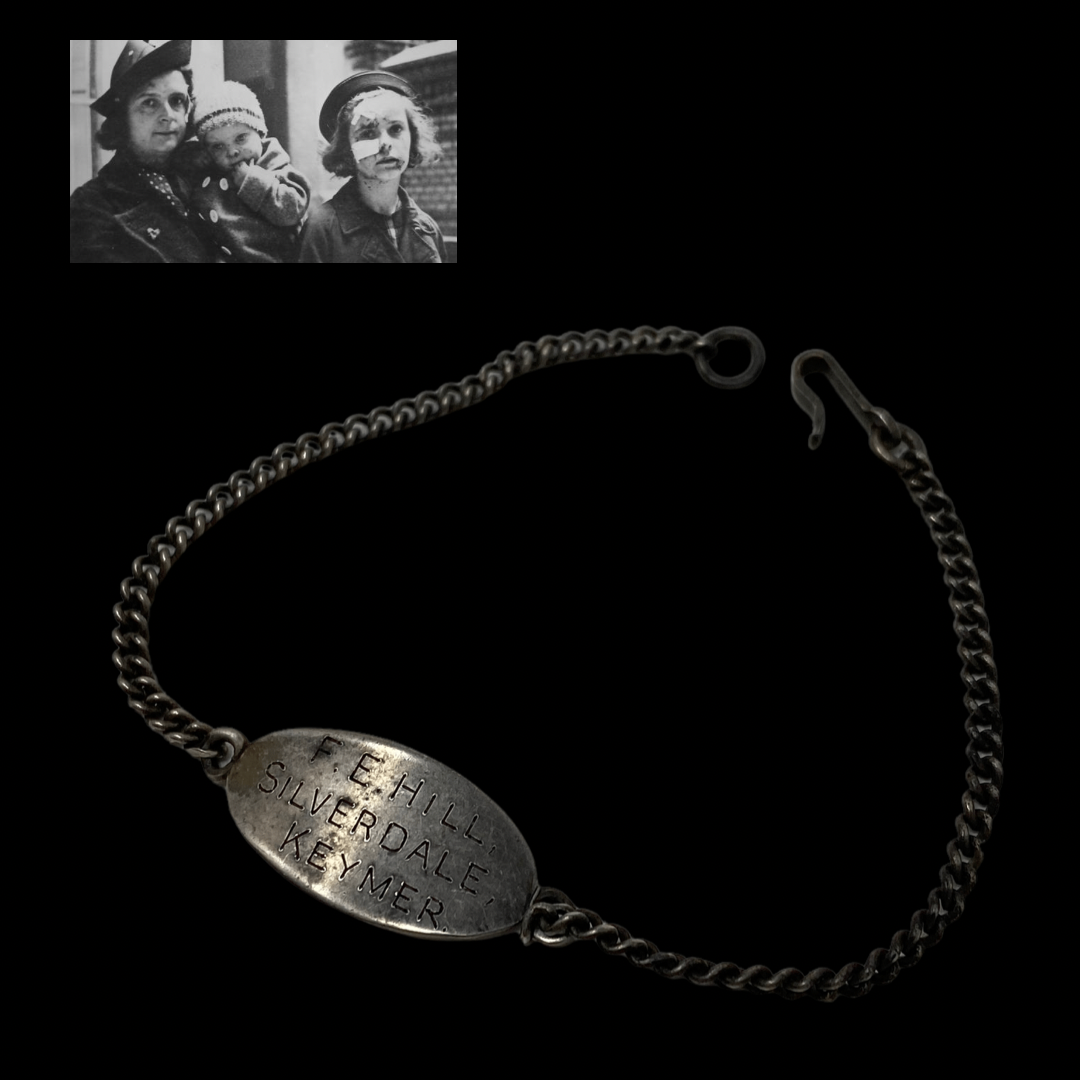

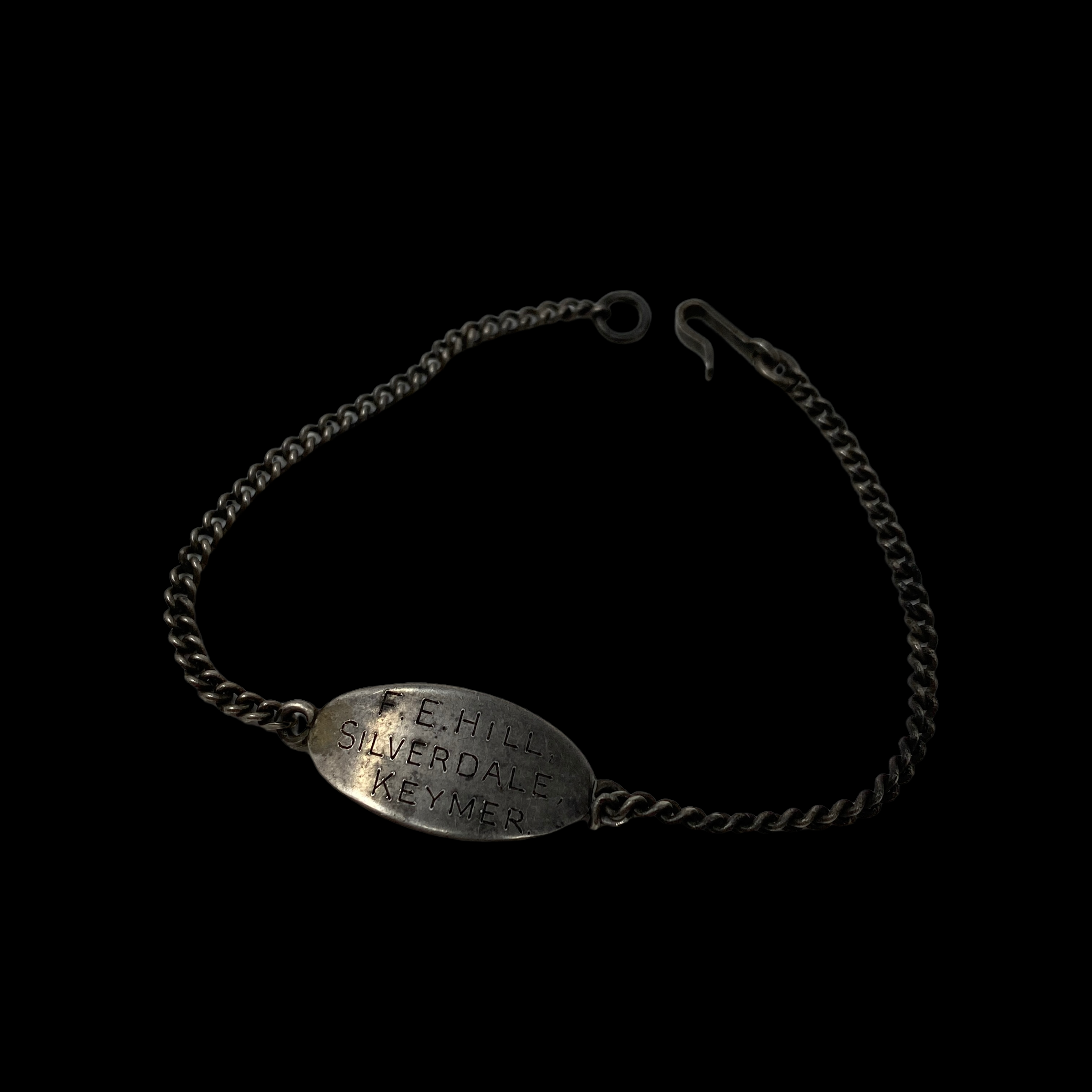
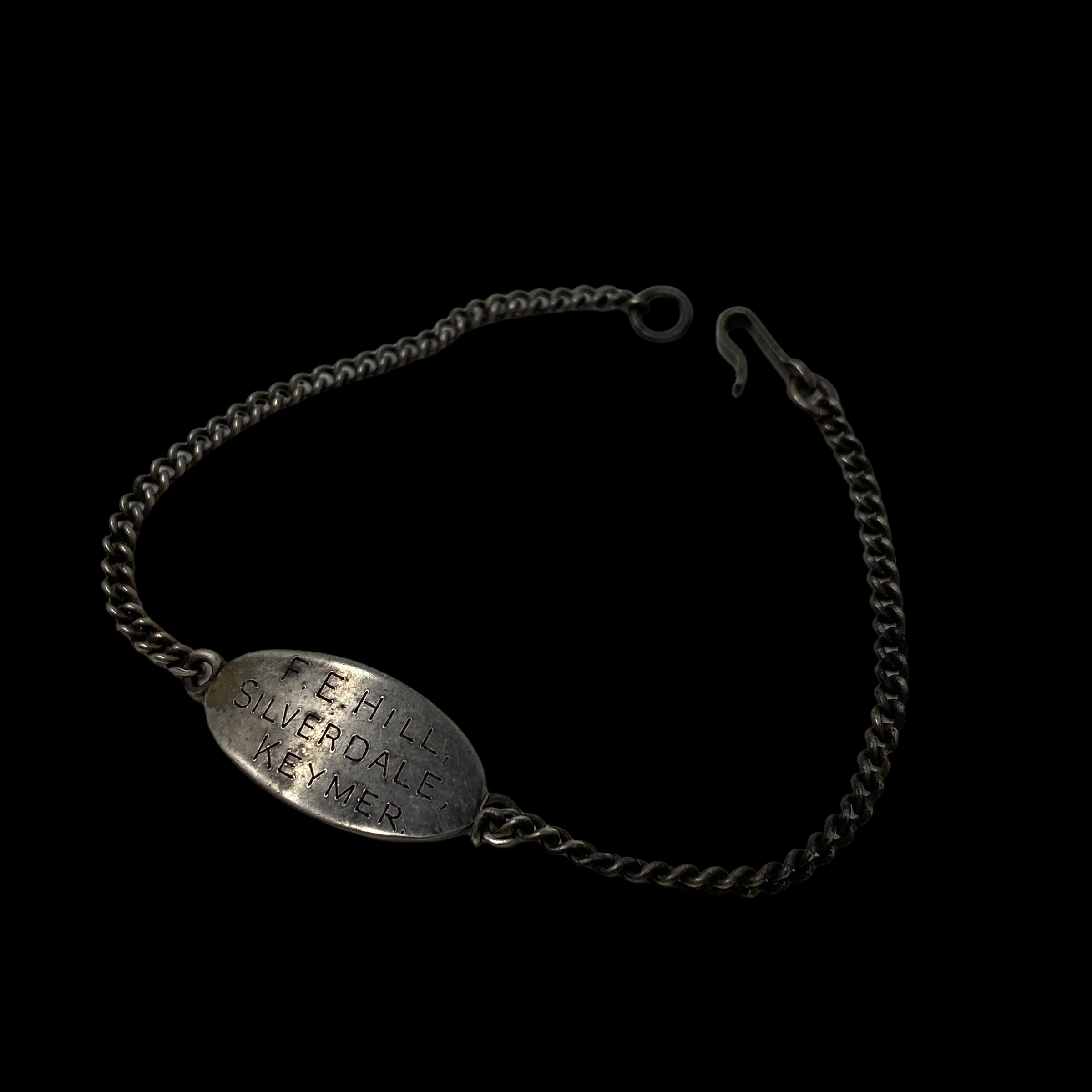
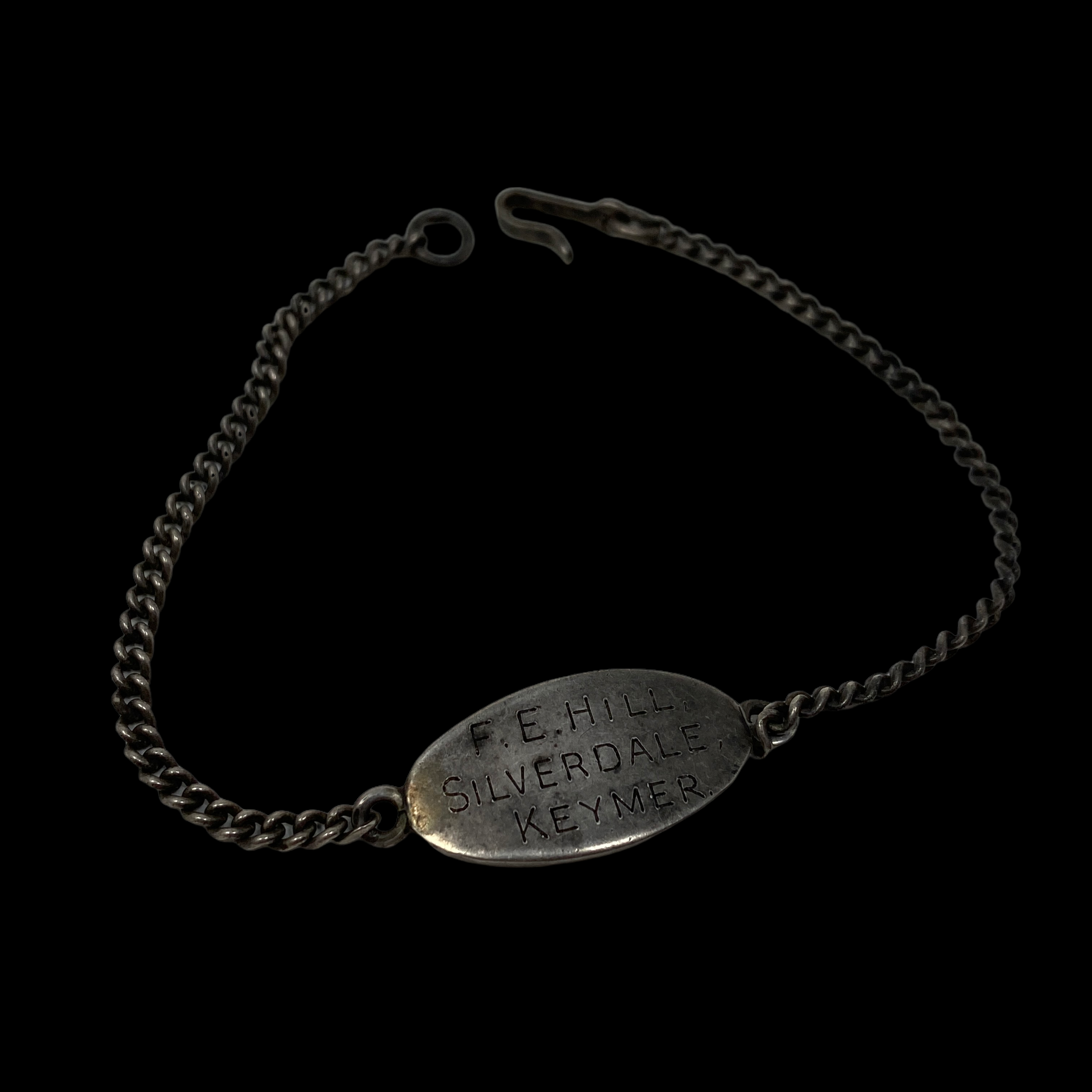

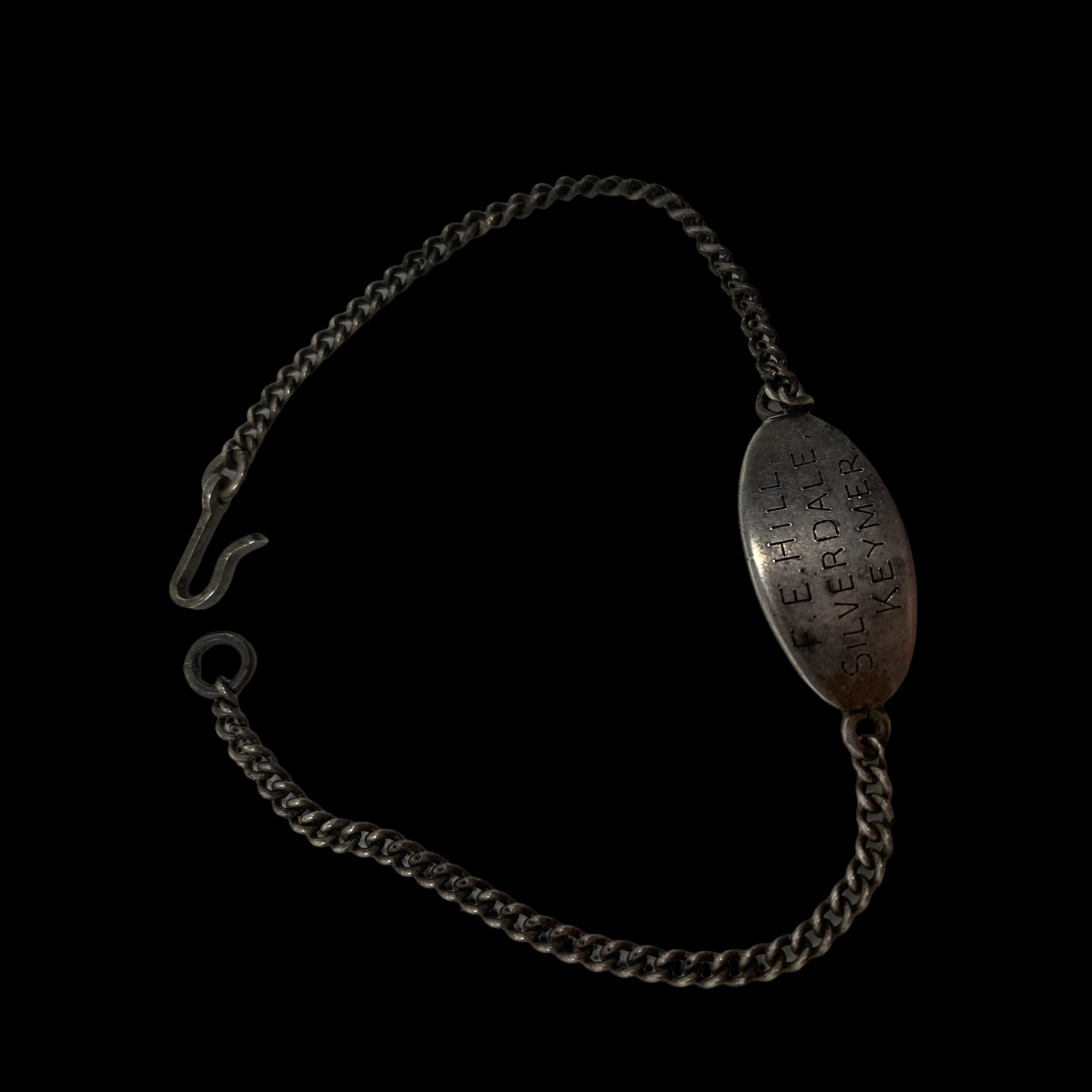

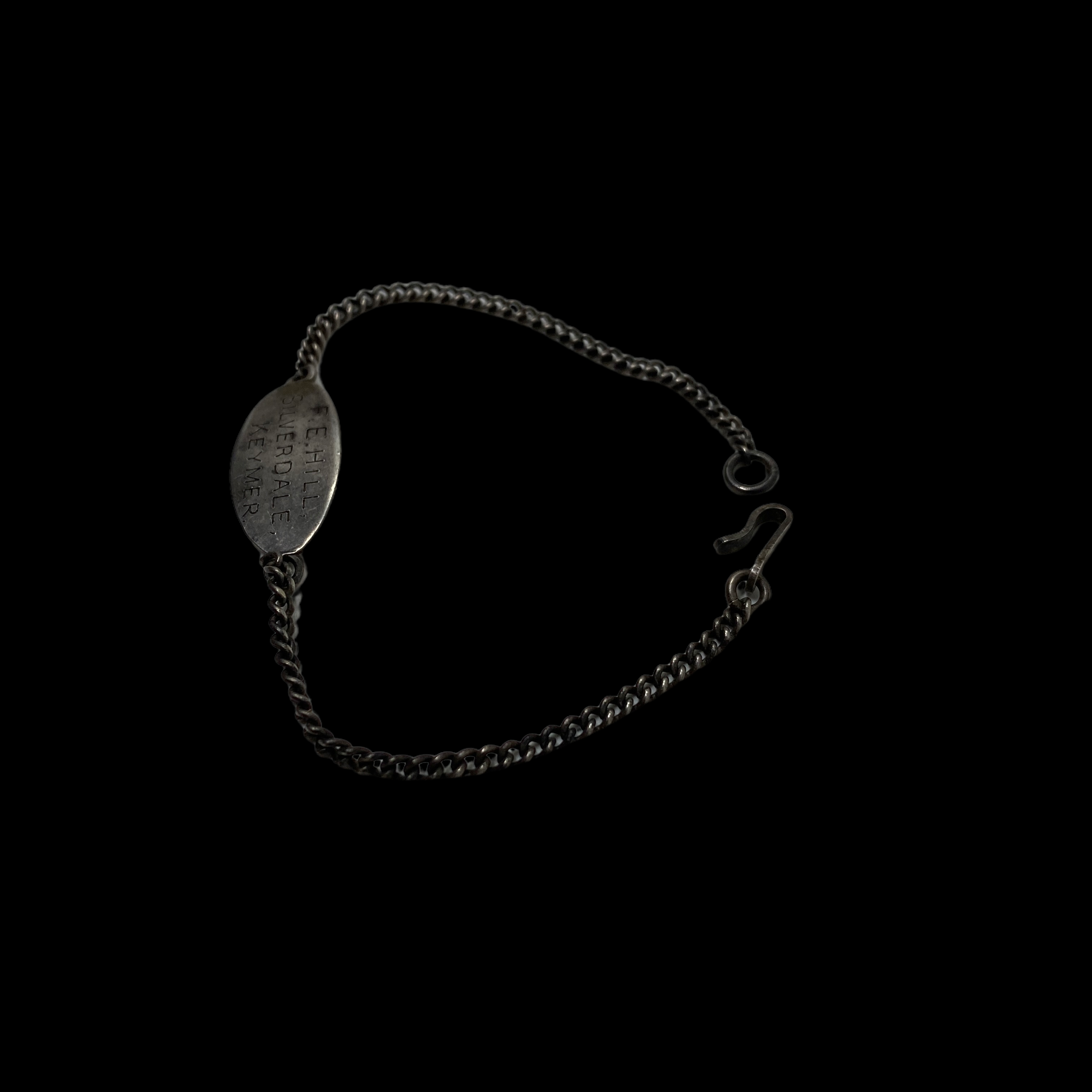
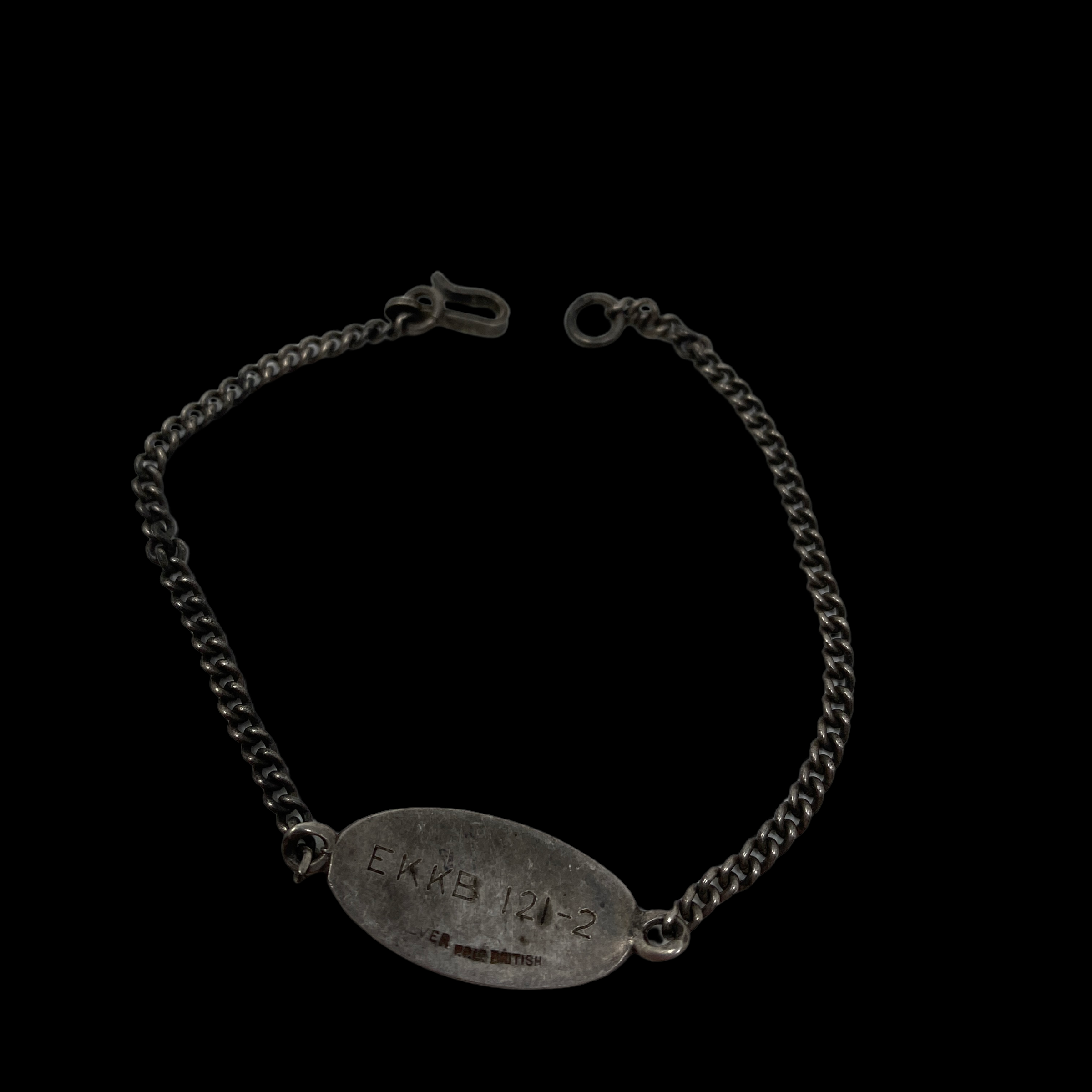
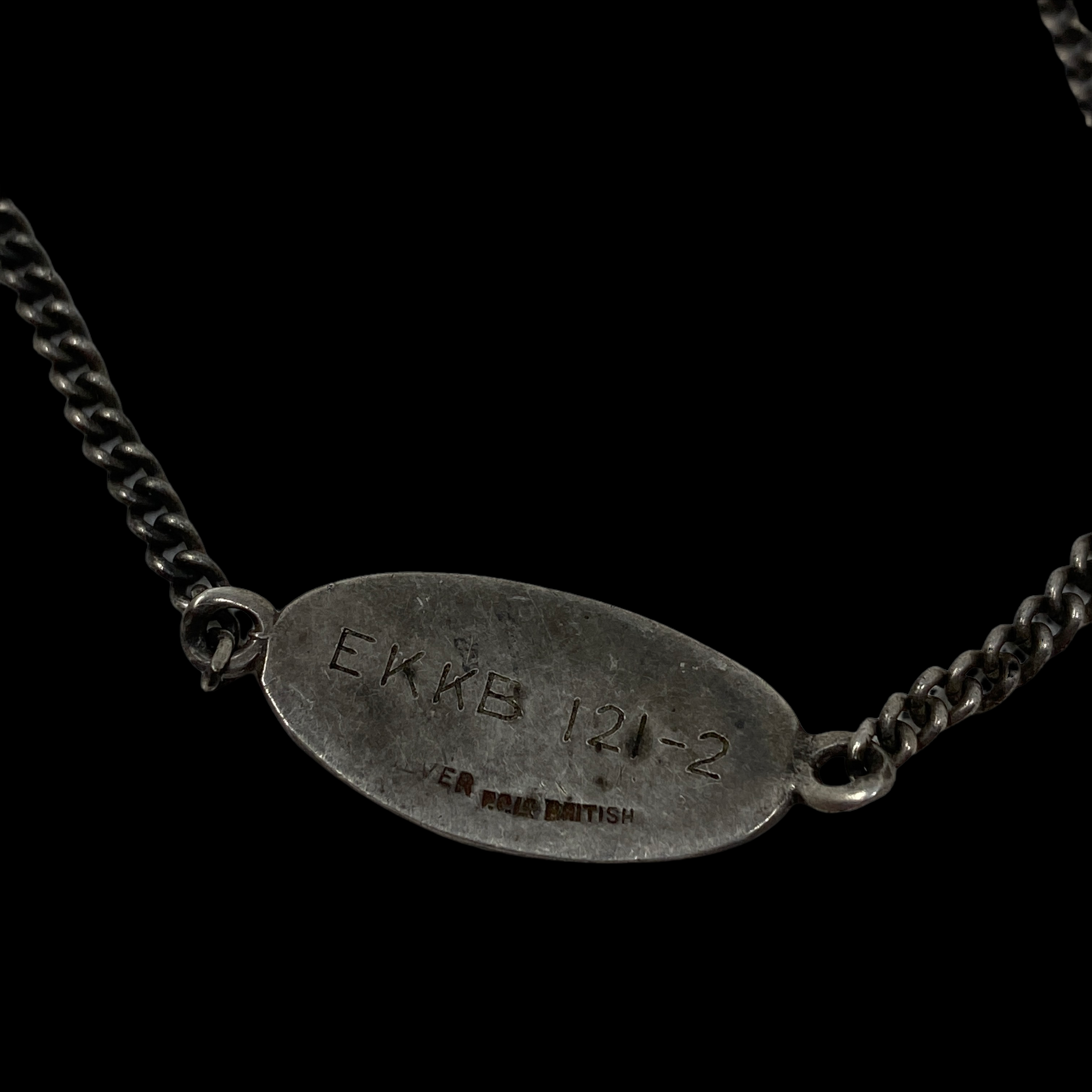
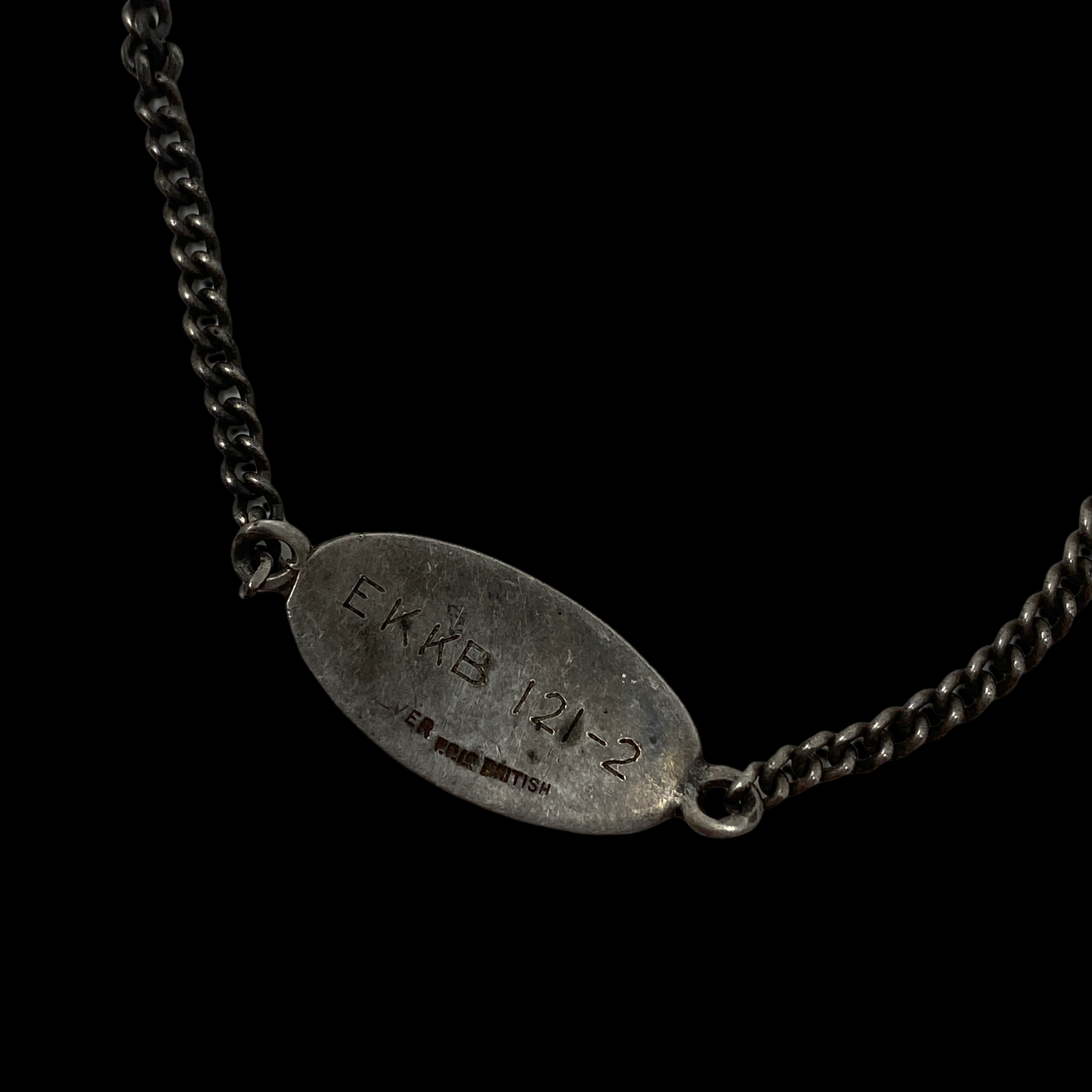

VERY RARE! WWII Battle of Britain Women's Civilian Air Raid Identity Bracelet Sussex, England
Comes with hand-signed C.O.A.
This incredible and museum grade WWII Sussex, England woman’s identification bracelet was worn by Fredercia E. Hill during the German air attacks during the Battle of Britain. The Battle of Britain, fought mainly in the skies above Sussex and Kent, took place between July and October 1940.
Identity bracelets like this one were worn by children and civilians to help reunite and identify them if they were separated, injured or worse, during an air raid. This dainty identity woman’s bracelet was meant to be worn at all times and with all outfits. This rare Battle of Britain identity bracelet is in incredible condition given its age and the events it went through.
Through the hot summer days, and into early autumn, of 1940, people in West Sussex were eye-witnesses of the drama of the Battle of Britain, watching the dog-fights in the clear blue skies as the gallant “Few” beat off the attempts of the Luftwaffe to clear the way for the invasion of Britain.
The enemy raids intensified from the middle of August. For his courage in a dog-fight on 16 August Flight Lieutenant James Brindley Nicholson, a Hurricane Pilot whose parents lived in Shoreham, became the first fighter pilot to win a Victoria Cross.
Not all came out of these encounters so successfully. Sergeant Cyril Babbage of 602 Squadron, Westhampnett, had to bail out of his crippled Spitfire on 26 August, and was rescued by fishermen at Bognor. During the Battle of Britain he was to shoot down six BF 109’s and was awarded the Distinguished Flying Medal.
The Battle of Britain, during World War II, was the successful defense of Great Britain against unremitting and destructive air raids conducted by the German air force (Luftwaffe) from July through September 1940, after the fall of France.
Victory for the Luftwaffe in the air battle would have exposed Great Britain to invasion by the German army, which was then in control of the ports of France only a few miles away across the English Channel. In the event, the battle was won by the Royal Air Force (RAF) Fighter Command, whose victory not only blocked the possibility of invasion but also created the conditions for Great Britain’s survival, for the extension of the war, and for the eventual defeat of Germany.
Battle of Britain Sussex Airfields:
West Sussex airfields played a crucial role in the air defence of Southern England in the early years of the war, and subsequently in the air-operations in the build-up to D-Day and the Normandy Landings.
RAF Tangmere was the controlling station of Sector “A”, in No 11 Group, Fighter Command, and as such covered an area from Brighton to Bournemouth. It is probably the most well-known Sussex airfield because of its Battle of Britain role, and links with the legendary Douglas Bader.
Airfields were a prime target for the Luftwaffe, and at lunchtime on Friday 16 August 1940, Tangmere was attacked by Stuka dive-bombers, causing great damage and leaving 13 killed. Through Tangmere flew French Resistance agents, trained at nearby Bignor, and using Tangmere Cottage as their secret operations centre. Many moonlit missions inside enemy-held territory were flown by the Lysanders of 161 (Special Duties) Squadron at Tangmere.
Ford, like Tangmere a former First World War airfield, was re-commissioned by the government in 1938 as a Fleet Air Arm Station. Two days after the raid on Tangmere, on Sunday 18 August 1940, Ford was also dive-bombed by Stukas, with 39 killed, many in a crowded canteen. A granite memorial was erected in Climping churchyard.
Ford had a varied role, flying in the wounded from France after D-Day, commanding the Air Sea Rescue Station at Littlehampton, and hosting the radar-equipped Fighter Interceptor Unit.
On the outbreak of war, West Sussex had a third military airfield, commissioned in 1938 at Thorney Island, but this number was soon to rise, first with the Tangmere satellite stations at Merston and Westhampnett, and by 1944 Chichester was to be surrounded by one of the highest concentration of airfields in the country.
Westhampnett had a vital role in the Battle of Britain, and later played host to Wing Commander Douglas Bader, who led the Tangmere Wing in 1941. In 1942, RAF Westhampnett became the home of 31st Fighter Group, US Army Air Force, equipped with Spitfires.